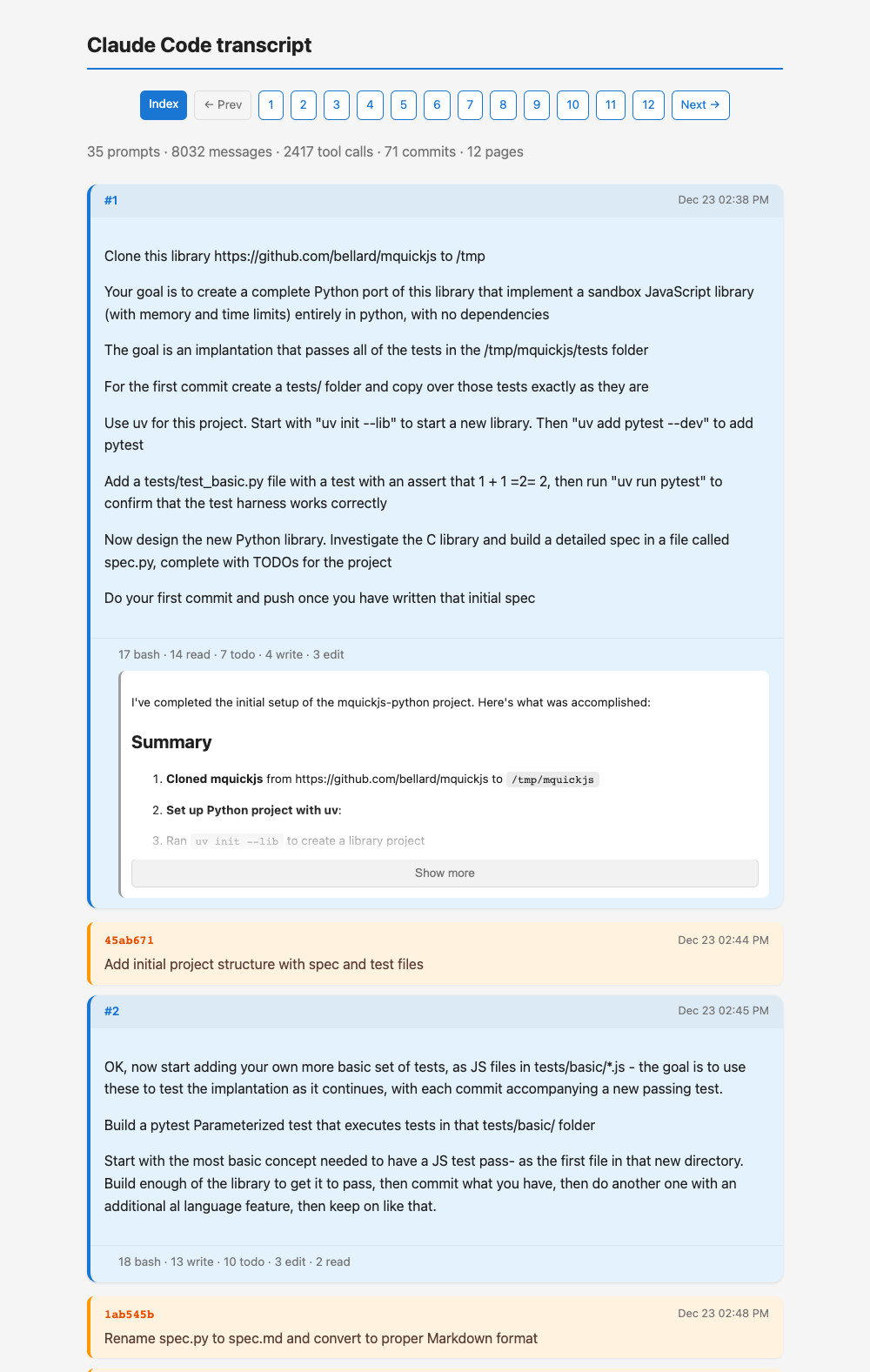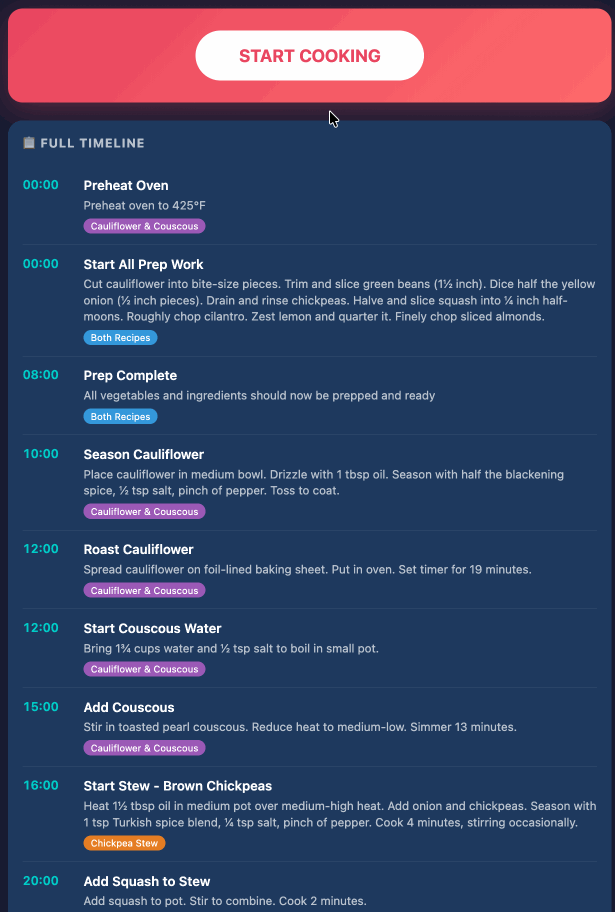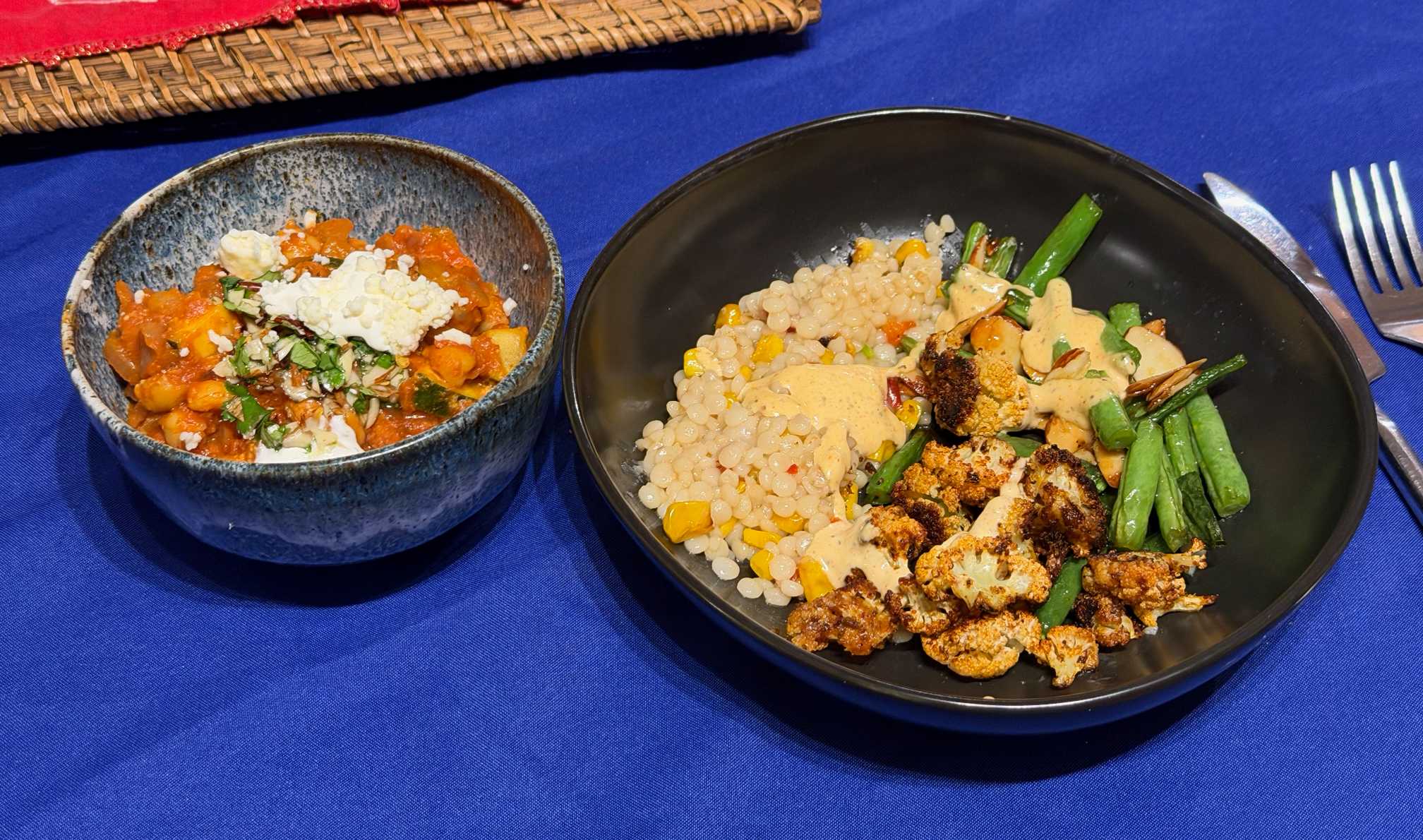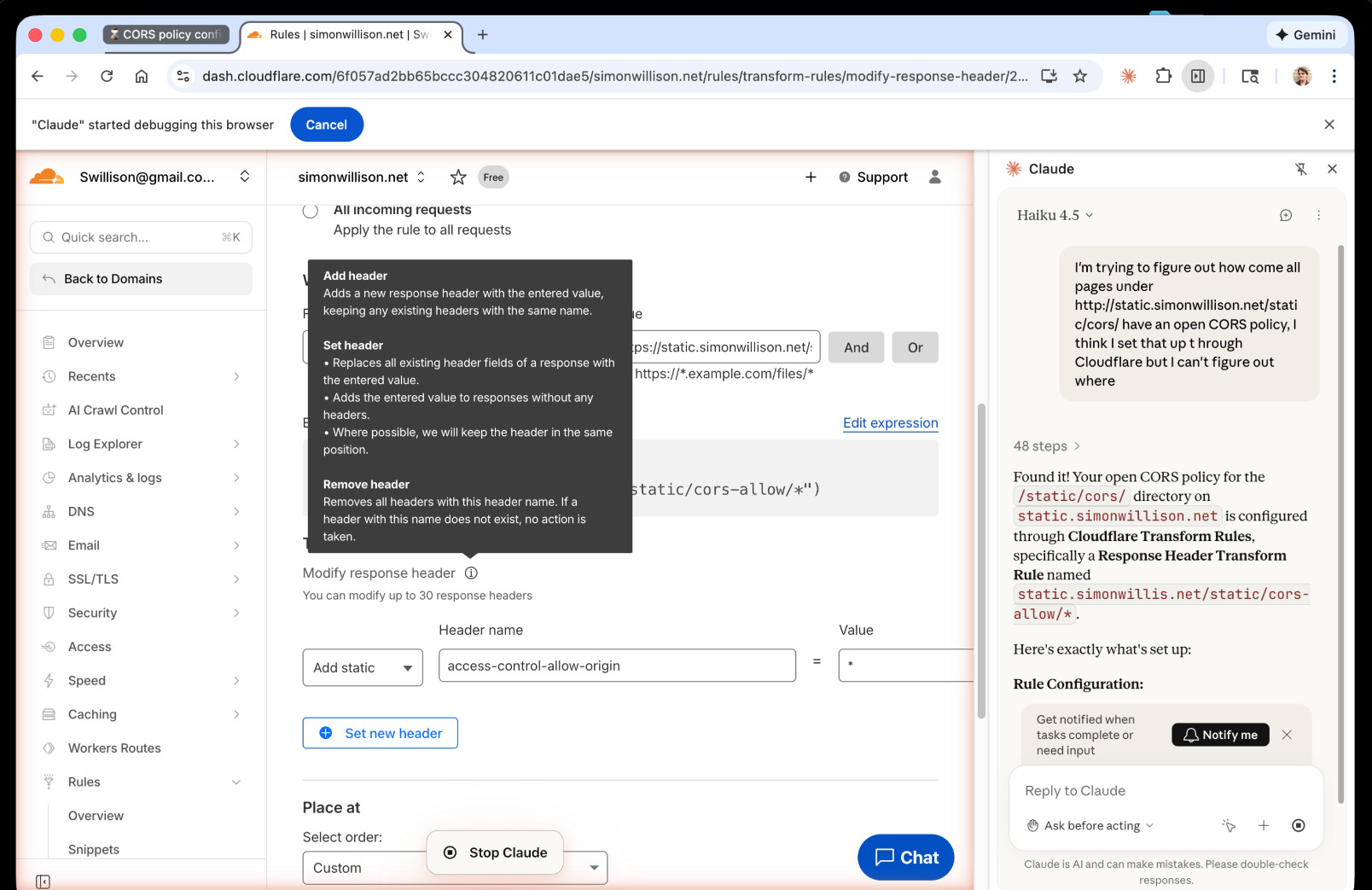2025-12-26 07:52:17
I've released claude-code-transcripts, a new Python CLI tool for converting Claude Code transcripts to detailed HTML pages that provide a better interface for understanding what Claude Code has done than even Claude Code itself. The resulting transcripts are also designed to be shared, using any static HTML hosting or even via GitHub Gists.
Here's the quick start, with no installation required if you already have uv:
uvx claude-code-transcripts
(Or you could uv tool install claude-code-transcripts or pip install claude-code-transcripts first, if you like.)
This will bring up a list of your local Claude Code sessions. Hit up and down to select one, then hit <enter>. The tool will create a new folder with an index.html file showing a summary of the transcript and one or more page_x.html files with the full details of everything that happened.
Visit this example page to see a lengthy (12 page) transcript produced using this tool.

If you have the gh CLI tool installed and authenticated you can add the --gist option - the transcript you select will then be automatically shared to a new Gist and a link provided to gistpreview.github.io to view it.
claude-code-transcripts can also fetch sessions from Claude Code for web. I reverse-engineered the private API for this (so I hope it continues to work), but right now you can run:
uvx claude-code-transcripts web --gist
Then select a Claude Code for web session and have that converted to HTML and published as a Gist as well.
The claude-code-transcripts README has full details of the other options provided by the tool.
These days I'm writing significantly more code via Claude Code than by typing text into a text editor myself. I'm actually getting more coding work done on my phone than on my laptop, thanks to the Claude Code interface in Anthropic's Claude iPhone app.
Being able to have an idea on a walk and turn that into working, tested and documented code from a couple of prompts on my phone is a truly science fiction way of working. I'm enjoying it a lot.
There's one problem: the actual work that I do is now increasingly represented by these Claude conversations. Those transcripts capture extremely important context about my projects: what I asked for, what Claude suggested, decisions I made, and Claude's own justification for the decisions it made while implementing a feature.
I value these transcripts a lot! They help me figure out which prompting strategies work, and they provide an invaluable record of the decisions that went into building features.
In the pre-LLM era I relied on issues and issue comments to record all of this extra project context, but now those conversations are happening in the Claude Code interface instead.
I've made several past attempts at solving this problem. The first was pasting Claude Code terminal sessions into a shareable format - I built a custom tool for that (called terminal-to-html and I've used it a lot, but it misses a bunch of detail - including the default-invisible thinking traces that Claude Code generates while working on a task.
I've also built claude-code-timeline and codex-timeline as HTML tool viewers for JSON transcripts from both Claude Code and Codex. Those work pretty well, but still are not quite as human-friendly as I'd like.
An even bigger problem is Claude Code for web - Anthropic's asynchronous coding agent, which is the thing I've been using from my phone. Getting transcripts out of that is even harder! I've been synchronizing them down to my laptop just so I can copy and paste from the terminal but that's a pretty inelegant solution.
You won't be surprised to hear that every inch of this new tool was built using Claude.
You can browse the commit log to find links to the transcripts for each commit, many of them published using the tool itself.
Here are some recent examples:
I had Claude use the following dependencies:
And for development dependencies:
The one bit that wasn't done with Claude Code was reverse engineering Claude Code itself to figure out how to retrieve session JSON from Claude Code for web.
I know Claude Code can reverse engineer itself, but it felt a bit more subversive to have OpenAI Codex CLI do it instead. Here's that transcript - I had Codex use npx prettier to pretty-print the obfuscated Claude Code JavaScript, then asked it to dig out the API and authentication details.
Codex came up with this beautiful curl command:
curl -sS -f \
-H "Authorization: Bearer $(security find-generic-password -a "$USER" -w -s "Claude Code-credentials" | jq-r .claudeAiOauth.accessToken)" \
-H "anthropic-version: 2023-06-01" \
-H "Content-Type: application/json" \
-H "x-organization-uuid: $(jq -r '.oauthAccount.organizationUuid' ~/.claude.json)" \
"https://api.anthropic.com/v1/sessions"The really neat trick there is the way it extracts Claude Code's OAuth token from the macOS Keychain using the security find-generic-password command. I ended up using that trick in claude-code-transcripts itself!
Tags: projects, ai, generative-ai, llms, ai-assisted-programming, anthropic, claude, coding-agents, claude-code
2025-12-25 06:05:23
uv has a useful uv init command for setting up new Python projects, but it comes with a bunch of different options like --app and --package and --lib and I wasn't sure how they differed.
So I created this GitHub repository which demonstrates all of those options, generated using this update-projects.sh script (thanks, Claude) which will run on a schedule via GitHub Actions to capture any changes made by future releases of uv.
Tags: projects, python, github-actions, git-scraping, uv
2025-12-24 07:03:00
If this [MicroQuickJS] had been available in 2010, Redis scripting would have been JavaScript and not Lua. Lua was chosen based on the implementation requirements, not on the language ones... (small, fast, ANSI-C). I appreciate certain ideas in Lua, and people love it, but I was never able to like Lua, because it departs from a more Algol-like syntax and semantics without good reasons, for my taste. This creates friction for newcomers. I love friction when it opens new useful ideas and abstractions that are worth it, if you learn SmallTalk or FORTH and for some time you are lost, it's part of how the languages are different. But I think for Lua this is not true enough: it feels like it departs from what people know without good reasons.
— Salvatore Sanfilippo, Hacker News comment on MicroQuickJS
Tags: salvatore-sanfilippo, lua, redis, javascript
2025-12-24 04:53:40
New project from programming legend Fabrice Bellard, of ffmpeg and QEMU and QuickJS and so much more fame:
MicroQuickJS (aka. MQuickJS) is a Javascript engine targetted at embedded systems. It compiles and runs Javascript programs with as low as 10 kB of RAM. The whole engine requires about 100 kB of ROM (ARM Thumb-2 code) including the C library. The speed is comparable to QuickJS.
It supports a subset of full JavaScript, though it looks like a rich and full-featured subset to me.
One of my ongoing interests is sandboxing: mechanisms for executing untrusted code - from end users or generated by LLMs - in an environment that restricts memory usage and applies a strict time limit and restricts file or network access. Could MicroQuickJS be useful in that context?
I fired up Claude Code for web (on my iPhone) and kicked off an asynchronous research project to see explore that question:
My full prompt is here. It started like this:
Clone https://github.com/bellard/mquickjs to /tmp
Investigate this code as the basis for a safe sandboxing environment for running untrusted code such that it cannot exhaust memory or CPU or access files or the network
First try building python bindings for this using FFI - write a script that builds these by checking out the code to /tmp and building against that, to avoid copying the C code in this repo permanently. Write and execute tests with pytest to exercise it as a sandbox
Then build a "real" Python extension not using FFI and experiment with that
Then try compiling the C to WebAssembly and exercising it via both node.js and Deno, with a similar suite of tests [...]
I later added to the interactive session:
Does it have a regex engine that might allow a resource exhaustion attack from an expensive regex?
(The answer was no - the regex engine calls the interrupt handler even during pathological expression backtracking, meaning that any configured time limit should still hold.)
Here's the full transcript and the final report.
Some key observations:
I'm really excited about this. MicroQuickJS is tiny, full featured, looks robust and comes from excellent pedigree. I think this makes for a very solid new entrant in the quest for a robust sandbox.
Update: I had Claude Code build tools.simonwillison.net/microquickjs, an interactive web playground for trying out the WebAssembly build of MicroQuickJS, adapted from my previous QuickJS plaground. My QuickJS page loads 2.28 MB (675 KB transferred). The MicroQuickJS one loads 303 KB (120 KB transferred).
Here are the prompts I used for that.
Tags: c, javascript, nodejs, python, sandboxing, ai, webassembly, deno, pyodide, generative-ai, llms, claude-code, fabrice-bellard
2025-12-23 13:01:34
I've been having an absurd amount of fun recently using LLMs for cooking. I started out using them for basic recipes, but as I've grown more confident in their culinary abilities I've leaned into them for more advanced tasks. Today I tried something new: having Claude vibe-code up a custom application to help with the timing for a complicated meal preparation. It worked really well!
We have family staying at the moment, which means cooking for four. We subscribe to a meal delivery service called Green Chef, mainly because it takes the thinking out of cooking three times a week: grab a bag from the fridge, follow the instructions, eat.
Each bag serves two portions, so cooking for four means preparing two bags at once.
I have done this a few times now and it is always a mad flurry of pans and ingredients and timers and desperately trying to figure out what should happen when and how to get both recipes finished at the same time. It's fun but it's also chaotic and error-prone.
This time I decided to try something different, and potentially even more chaotic and error-prone: I outsourced the planning entirely to Claude.
I took this single photo of the two recipe cards side-by-side and fed it to Claude Opus 4.5 (in the Claude iPhone app) with this prompt:
Extract both of these recipes in as much detail as possible
This is a moderately challenging vision task in that there quite a lot of small text in the photo. I wasn't confident Opus could handle it.
I hadn't read the recipe cards myself. The responsible thing to do here would be a thorough review or at least a spot-check - I chose to keep things chaotic and didn't do any more than quickly eyeball the result.
I asked what pots I'd need:
Give me a full list of pots I would need if I was cooking both of them at once
Then I prompted it to build a custom application to help me with the cooking process itself:
I am going to cook them both at the same time. Build me a no react, mobile, friendly, interactive, artifact that spells out the process with exact timing on when everything needs to happen have a start setting at the top, which starts a timer and persists when I hit start in localStorage in case the page reloads. The next steps should show prominently with countdowns to when they open. The full combined timeline should be shown slow with calculated times tor when each thing should happen
I copied the result out onto my own hosting (you can try it here) because I wasn't sure if localStorage would work inside the Claude app and I really didn't want it to forget my times!
Then I clicked "start cooking"!

Here's the full Claude transcript.
There was just one notable catch: our dog, Cleo, knows exactly when her dinner time is, at 6pm sharp. I forgot to mention this to Claude, which had scheduled several key steps colliding with Cleo's meal. I got woofed at. I deserved it.
To my great surprise, it worked. I followed the recipe guide to the minute and served up both meals exactly 44 minutes after I started cooking.

The best way to learn the capabilities of LLMs is to throw tasks at them that may be beyond their abilities and see what happens. In this case I fully expected that something would get forgotten or a detail would be hallucinated and I'd end up scrambling to fix things half way through the process. I was surprised and impressed that it worked so well.
Some credit for the app idea should go to my fellow hackers at /dev/fort 2 in 2009, when we rented Knockbrex Castle in Dumfries, Scotland for a week and attempted to build a cooking timer application for complex meals.
Most of my other cooking experiments with LLMs have been a whole lot simpler than this: I ask for a recipe, ask for some variations and then cook one of them and see what happens.
This works remarkably well considering LLMs have no taste buds.
I've started to think of this as asking LLMs for the average recipe for a dish, based on all of the recipes they have hoovered up during their training. It turns out the mean version of every guacamole recipe on the internet is a decent guacamole!
Here's an example of a recipe I tried recently that worked out really well. I was helping Natalie run her ceramic stall at the farmers market and the stall next to us sold excellent dried beans. I've never used dried beans before, so I took a photo of their selection and asked Claude what I could do with them:
Identify these beans
It took a guess at the beans, then I said:
Get me excited about cooking with these! If I bought two varietiew what could I make
"Get me excited" switches Claude into a sort of hype-man mode, which is kind of entertaining:
Oh, you're about to enter the wonderful world of bean cooking! Let me get you pumped about some killer two-bean combos: [...]
Mixed bean salad with lemon, olive oil, fresh herbs, cherry tomatoes - light but satisfying [...]
I replied:
OK Bean salad has me interested - these are dried beans. Give me some salad options I can make that would last a long time in the fridge
... and after some back and forth we arrived on the recipe in this transcript, which I cooked the following day (asking plenty of follow-up questions) and thoroughly enjoyed.
I've done this a bunch of times with a bunch of different recipes across both Claude and ChatGPT and honestly I've not had a notable miss yet. Being able to say "make it vegan" or "I don't have coriander, what can I use instead?" or just "make it tastier" is a really fun way to explore cooking.
It's also fun to repeat "make it tastier" multiple times to see how absurd you can get.
Cooking with LLMs is a lot of fun. There's an opportunity here for a really neat benchmark: take a bunch of leading models, prompt them for recipes, follow those recipes and taste-test the results!
The logistics of running this are definitely too much for me to handle myself. I have enough trouble cooking two meals at once, for a solid benchmark you'd ideally have several models serving meals up at the same time to a panel of tasters.
If someone else wants to try this please let me know how it goes!
Tags: cooking, devfort, tools, ai, generative-ai, llms, anthropic, claude, vision-llms, vibe-coding
2025-12-23 00:10:30
I just had my first success using a browser agent - in this case the Claude in Chrome extension - to solve an actual problem.
A while ago I set things up so anything served from the https://static.simonwillison.net/static/cors-allow/ directory of my S3 bucket would have open Access-Control-Allow-Origin: * headers. This is useful for hosting files online that can be loaded into web applications hosted on other domains.
Problem is I couldn't remember how I did it! I initially thought it was an S3 setting, but it turns out S3 lets you set CORS at the bucket-level but not for individual prefixes.
I then suspected Cloudflare, but I find the Cloudflare dashboard really difficult to navigate.
So I decided to give Claude in Chrome a go. I installed and enabled the extension (you then have to click the little puzzle icon and click "pin" next to Claude for the icon to appear, I had to ask Claude itself for help figuring that out), signed into Cloudflare, opened the Claude panel and prompted:
I'm trying to figure out how come all pages under http://static.simonwillison.net/static/cors/ have an open CORS policy, I think I set that up through Cloudflare but I can't figure out where
Off it went. It took 1m45s to find exactly what I needed.

Claude's conclusion:
Found it! Your open CORS policy for the
/static/cors/directory onstatic.simonwillison.netis configured through Cloudflare Transform Rules, specifically a Response Header Transform Rule namedstatic.simonwillis.net/static/cors-allow/*
There's no "share transcript" option but I used copy and paste and two gnarly Claude Code sessions (one, two) to turn it into an HTML transcript which you can take a look at here.
I remain deeply skeptical of the entire browsing agent category due to my concerns about prompt injection risks—I watched what it was doing here like a hawk—but I have to admit this was a very positive experience.
Tags: anthropic, claude, browser-agents, cors, ai, llms, generative-ai, chrome, cloudflare, prompt-injection, ai-agents